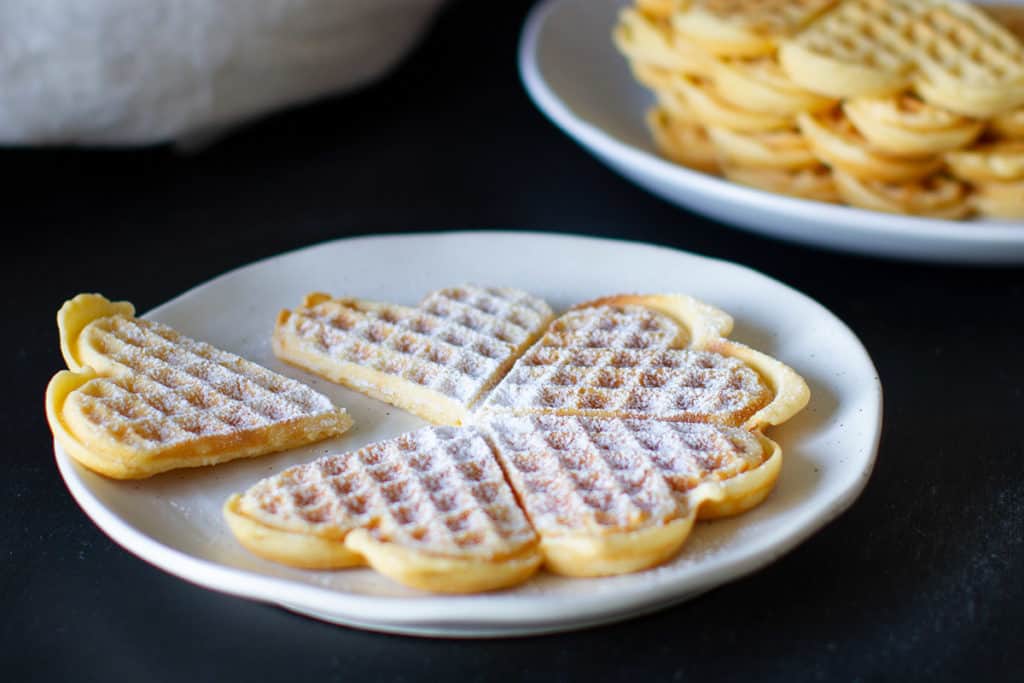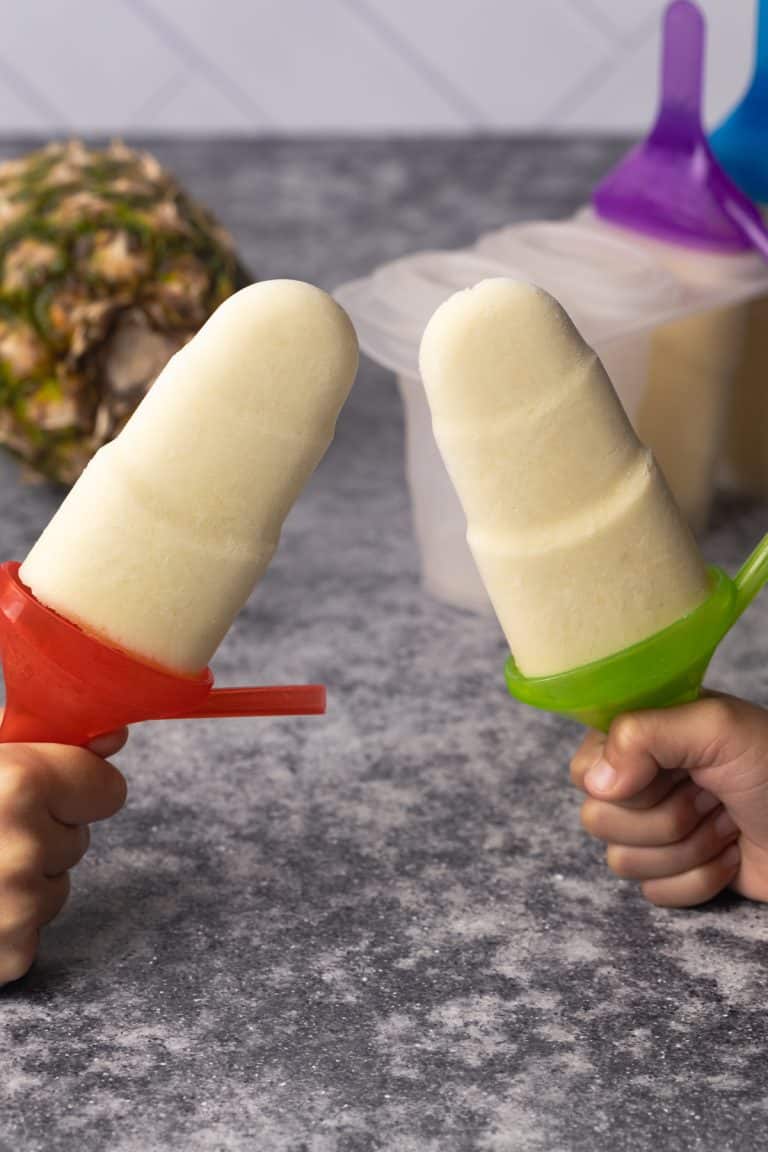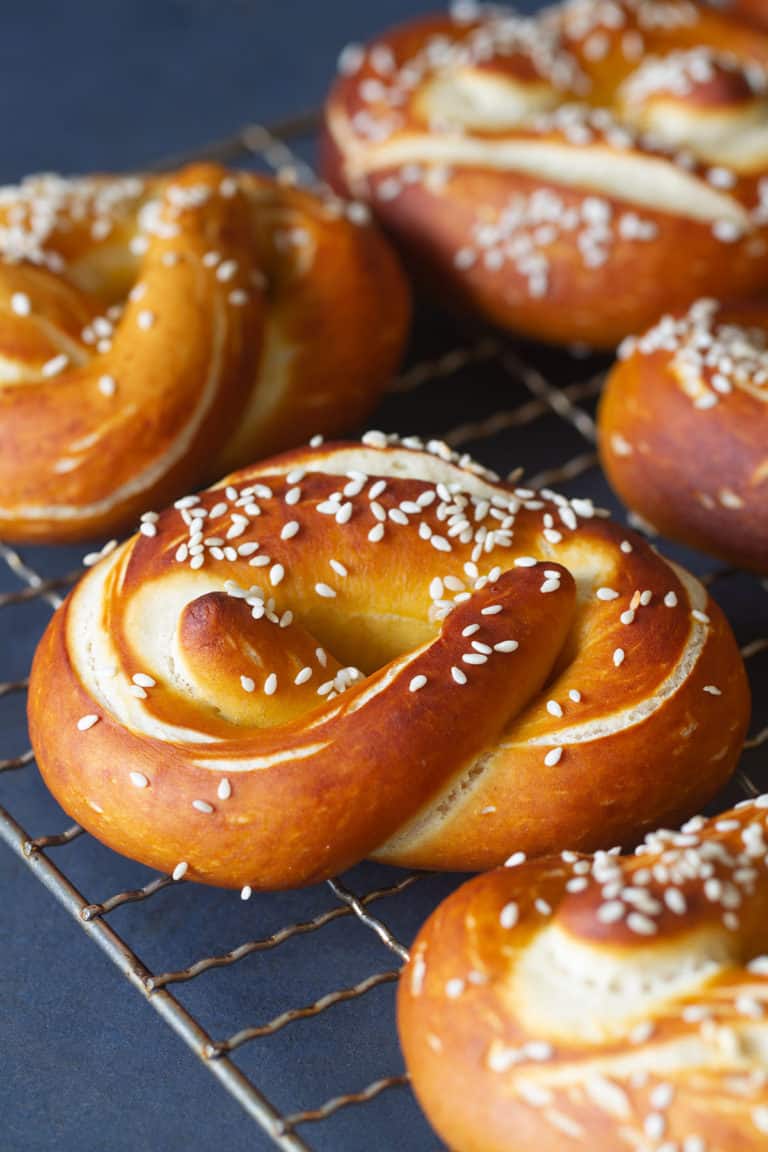15 Must-Try Types Of Waffles
How many different types of waffles have you tried? Do you know the difference between a Belgian and a regular waffle? In this article, I’ll cover the top 15 waffle types you must-try, including their unique flavors and textures. But let’s not waffle on and get straight into it!

15 must-try types of waffles from around the world
1. Gaufres / Belgian Waffles
Belgian waffles are made with a yeasted batter and come in two main types: Brussels waffles (often referred to simply as Belgian waffles) and Liège waffles.
Brussels waffles are typically rectangular and have a lighter texture as well as deep pockets, making them great for holding toppings like whipped cream, fruits, or syrup.
Liège waffles, on the other hand, are round, denser, and chewier, thanks to the inclusion of pearl sugar in the dough, which caramelizes on the outside during cooking, giving them a sweet and slightly crunchy exterior.
2. American Waffles
American-style waffles are big and fluffy and come in round and rectangular shapes. Typically enjoyed for breakfast with butter, crispy bacon, and maple syrup, they are also served with fried chicken in Southern states. Leavened with baking powder and soda to make them extra fluffy, buttermilk is often used in the batter instead of milk to add a distinct tangy flavor. Pumpkin waffles are another American fall favorite!

3. Waffeln / German Waffles
German waffles are typically heart-shaped and much thinner than Belgian waffles. The batter has more sugar than other waffle types which makes them incredibly delicious on their own.
4. Våfflor / Swedish Waffles
Swedish waffles also known as Frasvåfflor are crispy, round waffles traditionally served with whipped cream and lingonberries. Their eggless batter is often made with sparkling water giving these waffles an extra crispy texture.
In Sweden, waffles were traditionally square until the 19th century. This changed with the introduction of round waffle irons, designed to accommodate the circular holes of the newly invented cast iron stoves.
5. Krumkake / Norwegian Waffles
This Norwegian “curved cake” is a thin, delicate waffle-like cookie that is rolled into a cone shape while still warm. It’s often dusted with powdered sugar.
6. Gaufres / French Waffles
French waffles are not to be confused with Belgian yeasted waffles. French gaufres are made with eggs and no leavening agents, while a generous amount of butter adds extra richness and flavor.
7. Stroopwafel / Dutch Waffels
Stroopwafels are a beloved treat in the Netherlands. Made with two delicate waffle layers and a luscious caramel-like syrup filling, they can be enjoyed on their own or placed over a hot beverage to soften the caramel.
8. Pizzelle / Italian Waffles
An Italian treat, pizzelle are thin, crisp waffle-like cookies that often feature intricate patterns. They’re baked in special pizzelle waffle irons and are typically flavored with anise, vanilla, or other extracts.
9. Gai Daan Jai (雞蛋仔) / Hong Kong Egg Waffles
A popular street food in Hong Kong, these egg waffles translate to “little chicken egg” due to their distinctive egg-shaped cells. The bubble waffles can be eaten plain or filled with various sweet or savory fillings including green tea and ginger.
10. Mochi Waffles / Japanese Waffles
Japanese Mochi waffles are made with soft glutinous rice flour called mochiko. This extra fine sweet rice flour is typically used to make Mochi buns.
11. Taiyaki / Japanese Fish Waffles
Taiyaki, which translates to “baked sea bream” in English, is a popular Japanese street food. This sweet treat is shaped like a fish and takes its name from the tai fish, or red seabream, which it closely resembles. A common taiyaki filling is red bean paste which is a mixture made from sweetened adzuki beans.

12. Whey Waffles
Whey waffles have an incredibly soft texture and are packed with protein, especially if they’re made with Greek yogurt and protein powder. The perfect breakfast waffle option!
13. Croffles
Croffles are croissant waffles that are made by cooking croissant dough in a waffle iron. Their crispy, flaky, and rich flavor wins over waffles and croissant lovers alike.
14. Churro Waffles
A waffle with a churro-like texture, coated in cinnamon sugar, and served with chocolate or caramel sauce. Divine!
15. Waffle Cookies
Cookies baked in a waffle maker are a creative twist on traditional oven-baked cookies. Using a waffle maker to bake cookies results in a fun and unique way to different textures and shapes to your favorite cookie recipes. My German gingerbread cookies make delicious waffle cookies for example.
Waffle Toppings
Popular waffle toppings include classic choices like maple syrup and whipped cream. Fresh fruits including berries, Nutella, butter, powdered sugar, and ice cream are also much-loved choices.
Savory options such as cheese, crispy bacon, salmon, and eggs are popular choices for breakfast and brunch waffles.
Check out my 50 waffle toppings for more sweet and savory ideas on how to serve your favorite waffles.
International Waffle Day
International Waffle Day originated in Sweden, where it is known as Våffeldagen. It falls on March 25th, which is the Feast of the Annunciation on the Christian calendar.
History
Waffles have a history dating back to Europe in the 17th century. In 1869, Cornelius Swartwout, a Dutch-American, obtained a patent for the first waffle iron in the United States, designed for use over a coal stove.
A significant advancement in home-cooked waffles occurred in 1911 with the introduction of the first electric waffle iron. This innovation took a transformative turn when General Electric (GE) commercially released the electric waffle iron in 1918.
FAQ
Yes, you can use pancake mix to make waffles as both batters share similar ingredients. Waffle batter however is slightly thicker and you might to adjust fat content, leavening agents, and cooking time for optimal results.
Yes, waffles can be frozen. Simply allow them to cool and freeze waffles with layers of baking sheets between them for 2 to 3 months. When reheating, use a toaster, toaster oven, or regular oven to regain crispiness without the need for thawing.






